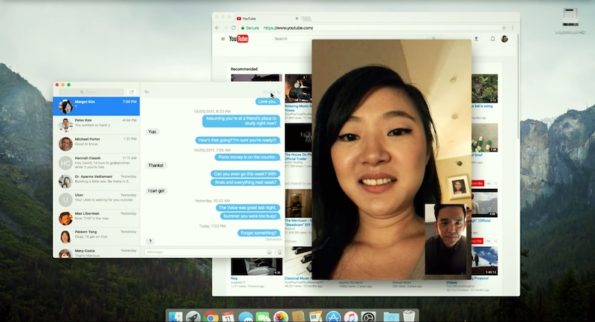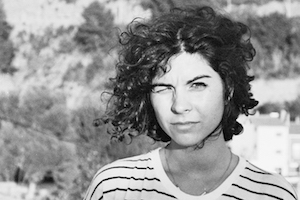Search
To search for an exact match, type the word or phrase you want in quotation marks.
A*DESK has been offering since 2002 contents about criticism and contemporary art. A*DESK has become consolidated thanks to all those who have believed in the project, all those who have followed us, debating, participating and collaborating. Many people have collaborated with A*DESK, and continue to do so. Their efforts, knowledge and belief in the project are what make it grow internationally. At A*DESK we have also generated work for over one hundred professionals in culture, from small collaborations with reviews and classes, to more prolonged and intense collaborations.
At A*DESK we believe in the need for free and universal access to culture and knowledge. We want to carry on being independent, remaining open to more ideas and opinions. If you believe in A*DESK, we need your backing to be able to continue. You can now participate in the project by supporting it. You can choose how much you want to contribute to the project.
You can decide how much you want to bring to the project.

As a kind of prediction, in 2018 Aneesh Chaganty released Searching, a pioneering thriller developed entirely on the computer screen. In the multiple folders and windows that the character opened, there were overlapping chat conversations, work videoconferences, video calls with the family, home videos of vacations, secret recordings, newscasts and navigations through the interface. Such a variety of formats reveal the multiplicity of cameras that are at our disposal in everyday life, and the hyperactive, dispersed and totalizing gaze with which we try to attend to the continuous visual inputs that request our attention. Just one year later, the split screen reached its peak within our daily lives.
Although it had already been a resource used often in video clips, video games, and of course in movies, due to its narrative and attractive potential, it has been during these two years of confinement full of teleworking, virtual classes, video calls and video conferences, that it has become more present than ever before, making us realize how this form of representation and mediation of the world affects us.
We have seen how, unlike the fixed and single image, the split screen, especially the most complex, mosaic or multiscreen format, leads us to an excess of images, to a collapse of choice in overproduction and to waste. Our eyes can only pay attention to one frame at a time, so while we look to one side, the other frames are wasted. This relationship between excess, consumption, and waste of material is part of what Nadia Bozak identifies as the dynamics of post-industrial culture reflected in video surveillance cameras: an unlimited amount of audiovisual content that, in the best case scenario, will never be viewed after it is recorded[1]Bozak, Nadia (2008), “Four Cameras are Better than One: Division as Excess in Mike Figgis’ Timecode.” In: Refractory: Journal of Entertainment and Media, vol. 14. University of Melbourne, … Continue reading. As in physical reality, we cannot take in everything. We engage in cross-cutting as we look from one plane to another on the screen. We carry out a mental edit when deciding the order and the time to dedicate to each of the sections. Richard Fleischer calls this “making the audience work” by challenging us to assimilate more information than what is within a single frame. It requires an active commitment, and we are invited to establish connections, correlations, and create order between the simultaneous planes that compete with each other. Often this resource breaks with the principle of filmic transparency by showing the artificial nature of the image: a frame within a frame draws attention to the deliberate act of framing. Given this situation, in the traditional split screens the viewer temporarily suspends his credulity. However, in the simulation of video calls (such as in the not very fortunate Host by Rob Savage, 2020) the opposite happens: cinema becomes more real.
The canvas-screen has been an open window from which to look out at the world since Alberti described it as such in the 15th century. This way of understanding representation was very successful among Renaissance artists who through perspective translated reality to the two-dimensional plane, and although it has undergone significant transformations with Cubism and the collages of the Dadaists in the early 20th century, and previously in classical and medieval diptychs, triptychs and other polyptychs popular back then, we can see how only in recent years the glass of the window/screen has been blown to bits in order to show us other forms of representation. Perhaps the split screen is one of the paradigmatic cinematographic resources of the current era in digital societies. Thus, as guest editor for the month of November, it seemed appropriate to dedicate this issue to reflect on the split screen with four professionals from the fields of cinema and audiovisual, video and digital art, namely, Arturo/fito Rodríguez, Mariela Cantú, Pau Waelder and Ingrid Guardiola.
Has our phenomenology of seeing changed[2]“Phenomenology of Seeing” is a term coined by fito Rodríguez and cited by Ingrid Guardiola in her text.? Will the split screen become a heterotopia[3]In his text, Pau Waelder recovers and updates the “heterotopia” proposed by Foucault., a space for presentation and contemplation in which to find oneself and which does not represent the place we inhabit but rather a different, virtual and, therefore, non-existent place?
(Featured image: Still from the film Searching directed by Aneesh Chaganty in 2018).
| ↑1 | Bozak, Nadia (2008), “Four Cameras are Better than One: Division as Excess in Mike Figgis’ Timecode.” In: Refractory: Journal of Entertainment and Media, vol. 14. University of Melbourne, Melbourne. |
|---|---|
| ↑2 | “Phenomenology of Seeing” is a term coined by fito Rodríguez and cited by Ingrid Guardiola in her text. |
| ↑3 | In his text, Pau Waelder recovers and updates the “heterotopia” proposed by Foucault. |

Nerea Arrojería is an art historian specialized in photography. Among her lines of interest is the still or moving image used in contemporary societies, inside or outside the museum.
"A desk is a dangerous place from which to watch the world" (John Le Carré)